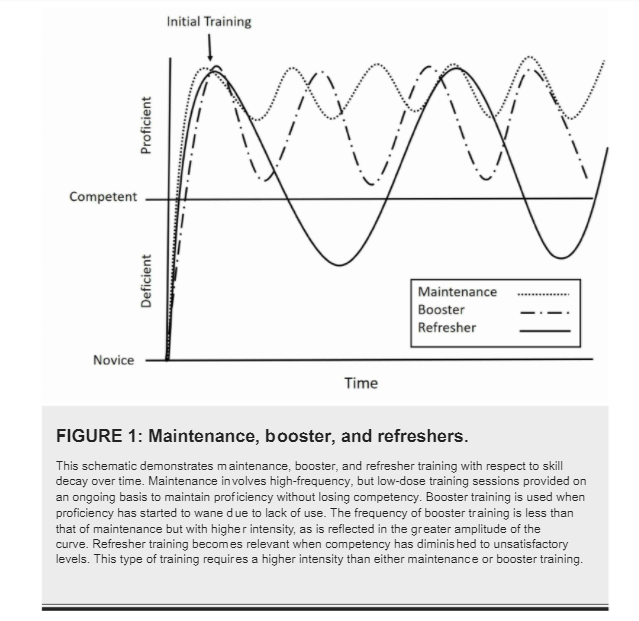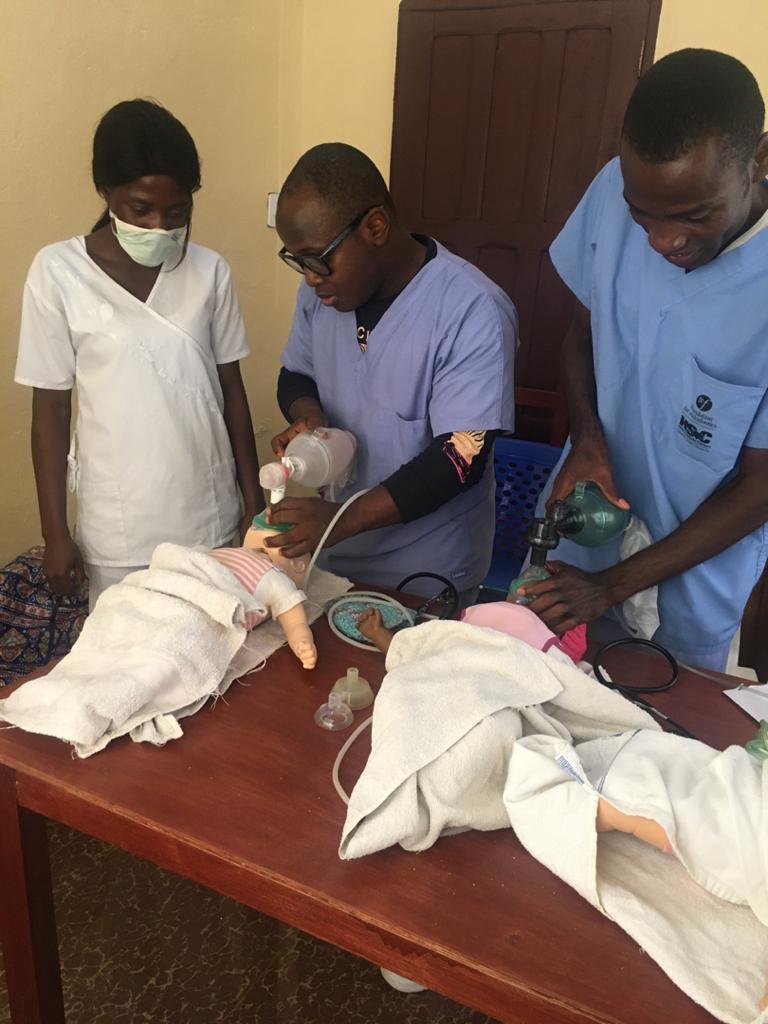Dr Jarlath O’Donohoe, always in pursuit of the Holy Grail – a solution to the “skills decay” problem….
Learning Curve: shows a relationship between the amount of practice / experience of a skill and the degree of competence achieved.
Forgetting Curve: the relation between the decay of a learned skill and the time elapsed since the skill was learned.
Experience Curves: combines the learning and forgetting curves.
Activities to overcome skill decay can be qualitatively classified as maintenance , booster or refresher, according to the diagram below:

Note the amount of time spent “deficient” with “refresher” activities. An example of this is paediatricians in the UK re-certifying in APLS every 4 years. “Booster” training is possibly achieved by statutory mandatory training paediatric basic life support every year and keeps the average paediatrician “proficient”. Would lower intensity but more frequent “maintenance” activities do a better job eg. weekly simulation training sessions?
Here is Kola delivering his “booster” training sessions in neonatal resuscitation to nurse technicians in Liberia this week, using equipment left by NICHE after the first batch of instructors were trained in 2019.

How often does he need to run these sessions to make this maintenance training and not refresher sessions? The quest continues….

